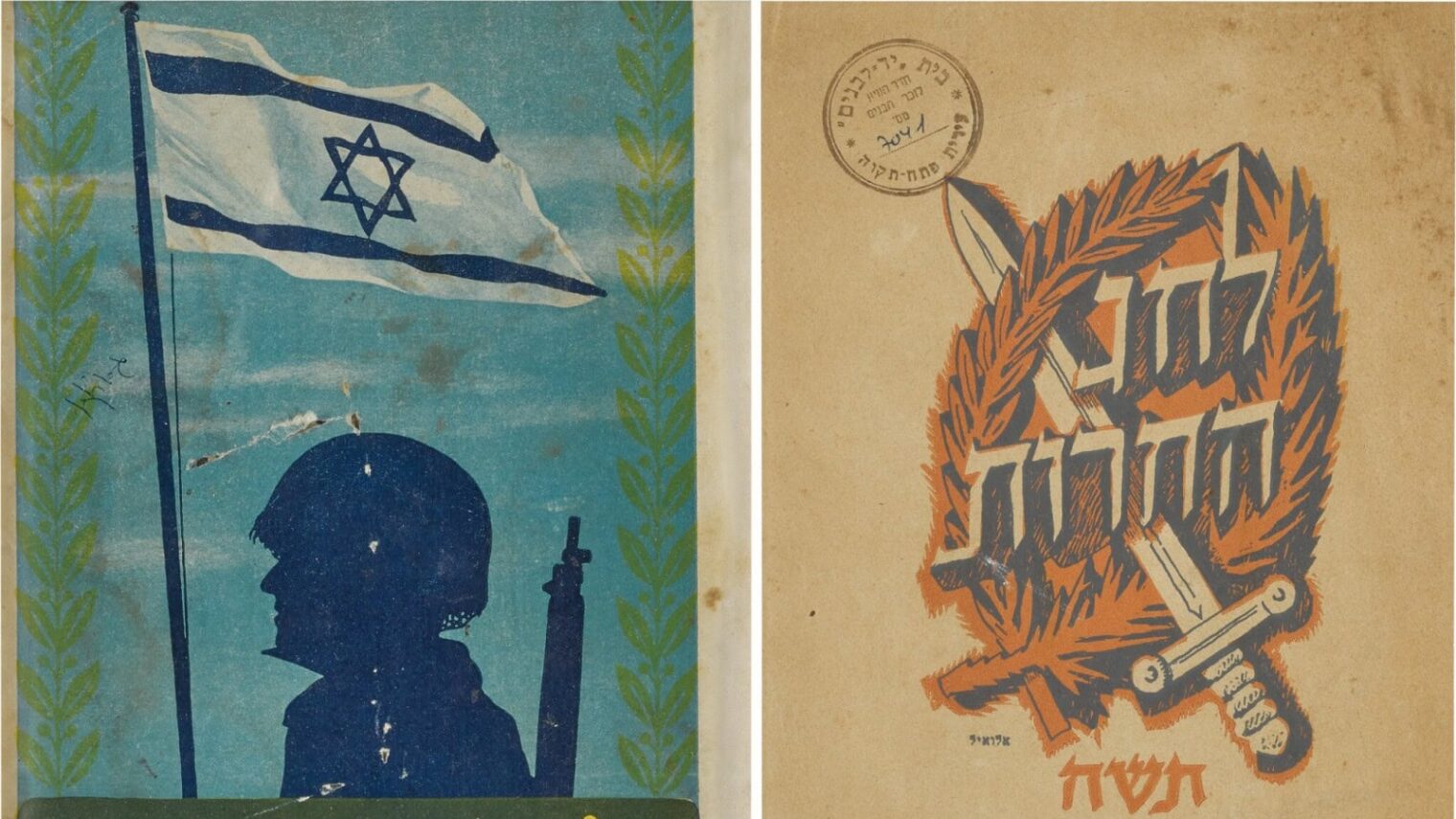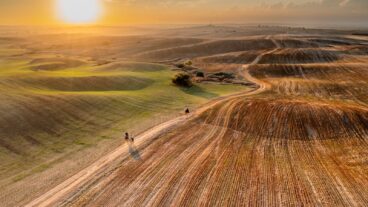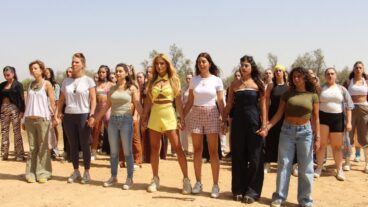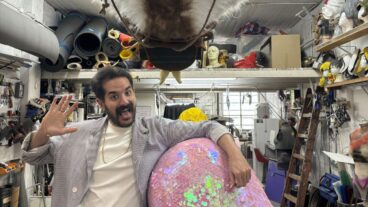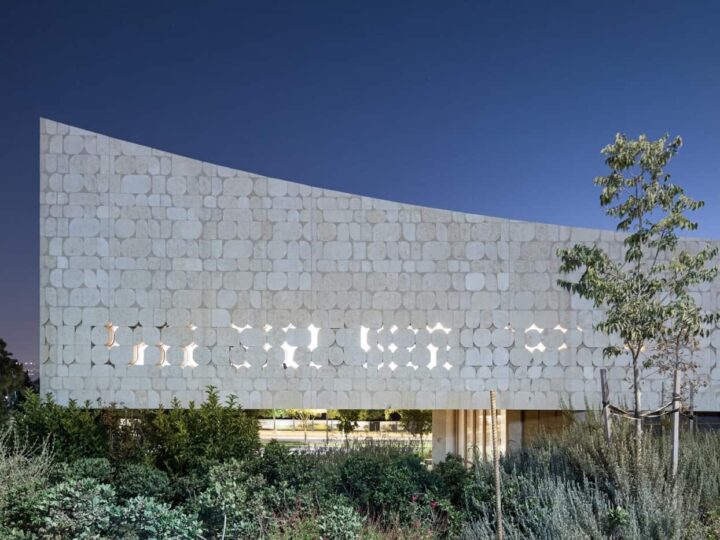The Passover Haggadah holds a special place in Jewish and Israeli culture.
This dramatic story of the enslaved Israelites’ exodus from Egypt more than 3,400 years ago, led by one man with divine assistance, is brought to life at the Seder table each year.
The term haggadah translates to “story,” and the Haggadah is a physical book that often includes illustrations and commentary alongside the traditional Seder text.
But it’s not just a historical tale. The Haggadah inspires creativity and reflection, enabling participants to draw parallels between the exodus story and their contemporary lives.
These books have long been an artform offering a glimpse into the cultures of the times in which they were published, often reflected in their stylistic imagery, artistic methods and unique themes.
More modern Haggadahs often present us with new printmaking techniques, while providing the chance to connect with the traditions of Passover in a meaningful and contemporary way.
We’ve rounded up the most interesting Haggadahs you can see this year in Jerusalem.
Perhaps in this list, you’ll find the Haggadah that speaks about your own personal redemption.
1. Independence Haggadah by Aharon Megged, Tel Aviv, 1952
The Independence Haggadah was created in 1952 following the establishment of two official holidays in Israel: Independence Day and Memorial Day. Compiled by Aharon Megged, head of IDF public information at the time, the unique Haggadah is rich with images and texts that highlight the spirit of freedom in the context of Zionism.
Although it draws inspiration from the Passover Haggadah, the Independence Haggadah is not meant to be used at the Seder table. Instead, its creators wanted to embed Independence Day with traditions similar to the religious holiday, providing liturgy that would guide future generations of Israeli citizens to connect with the “army’s festive holiday.”
Because this redemption story highlights the role of the IDF over divine intervention, it caused quite the uproar in religious circles. Eventually, this led first Prime Minister David Ben-Gurion to order the destruction of all copies—save a few rare copies on view today at the National Library in Jerusalem.
2. The Rothschild Haggadah
This Haggadah has a haggadah of its own, starting 550 years ago when it was created in northern Italy by illustrator Yoel Ben Shimon. It was purchased by Baron Rothschild, a well-known collector of art, and left to his heir, James Rothschild, who lived in Paris during World War II.
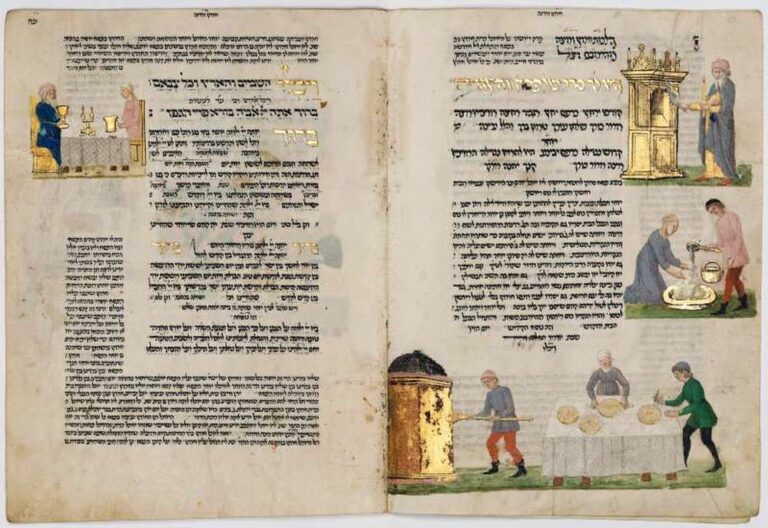
Alongside other valuable possessions, The Rothschild Haggadah was placed in a bank for safety, but was eventually removed by the Nazis and sent to Germany. For almost 40 years, the book was lost, until a professor at Princeton University identified it as the “Rothschild Haggadah” in 1980.
Today, it sits in the collection of the National Library. Viewers will appreciate the 50 pages of colorful illustrations and text written in quadratic Ashkenazi script.
While the drawings and motifs connect to the Haggadah and the exodus, there are also strange additions, such as a drunk gentile roasting a pig. It also reflects the area where it was made, depicting scenery and clothing one would see in northern Italy.
3. The Unbound Haggadah by Elie Kaplan-Wildman
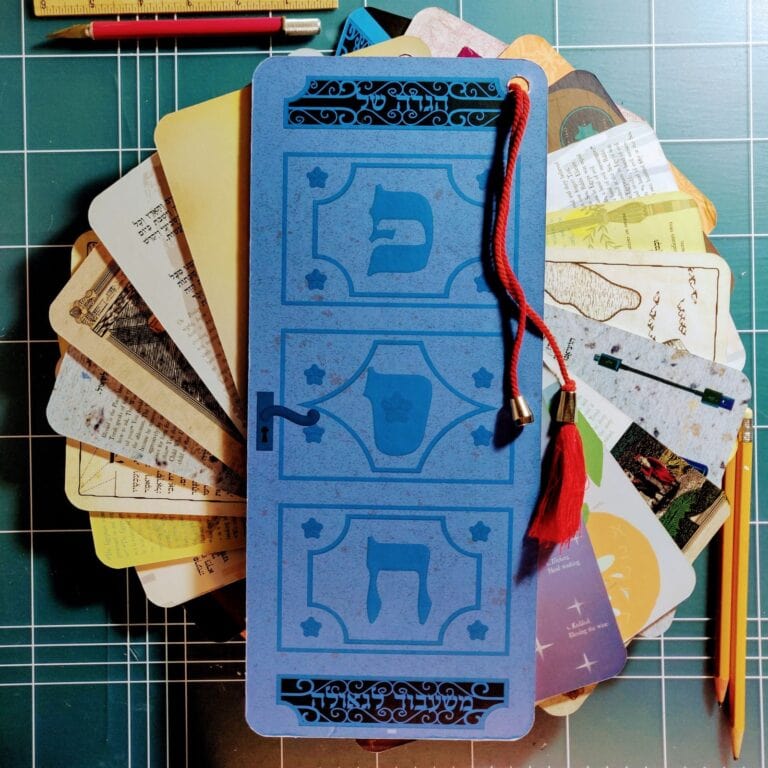
The Unbound Haggadah serves as a link between old and the new. In an era where information is increasingly digital and curated visually, it often seems we need to revolutionize the way stories are read — which is why Unbound facilitates an immersive and tangible book experience.
Here, a series of 12 tactile cards with the full text of the Haggadah are designed with visuals that illustrate modern, relevant interpretations meant to spark conversations about what freedom means today.
For example, the 10 plagues are interpreted as iPhone icons; dead cattle are a meat delivery truck; and darkness is a nearly dead cell-phone battery.
When a copy is brought to the Seder table, Unbound can be handed out, allowing everyone to look and follow along together. But even if you view the library setting, its out-of-the-box design will be engaging enough to spark some revolutionary ideas of your own.
A special version of the Unbound Haggadah is on view at Israel National Library, while copies can be purchased online.
4. Kibbutz Haggadah, Yagur version
There is perhaps no better type of Haggadah to celebrate the Zionist spirit than the Kibbutz Haggadah. This book was created at Kibbutz Yagur in 1943 by Yehuda Sharett, who was inspired to create a new Passover Seder.
The Russian-born composer and violinist wanted a Seder that could be likened to a complete musical composition, and while its based on the traditional next and melodies, The Kibbutz Haggadah includes additional poems, plays and songs composed by Sharett himself.
At some point, it was the go-to Haggadah in many kibbutzim throughout Israel and was even used in Europe within displaced persons camps after the war. Today, this Kibbutz Haggadah can be viewed at the National Library.
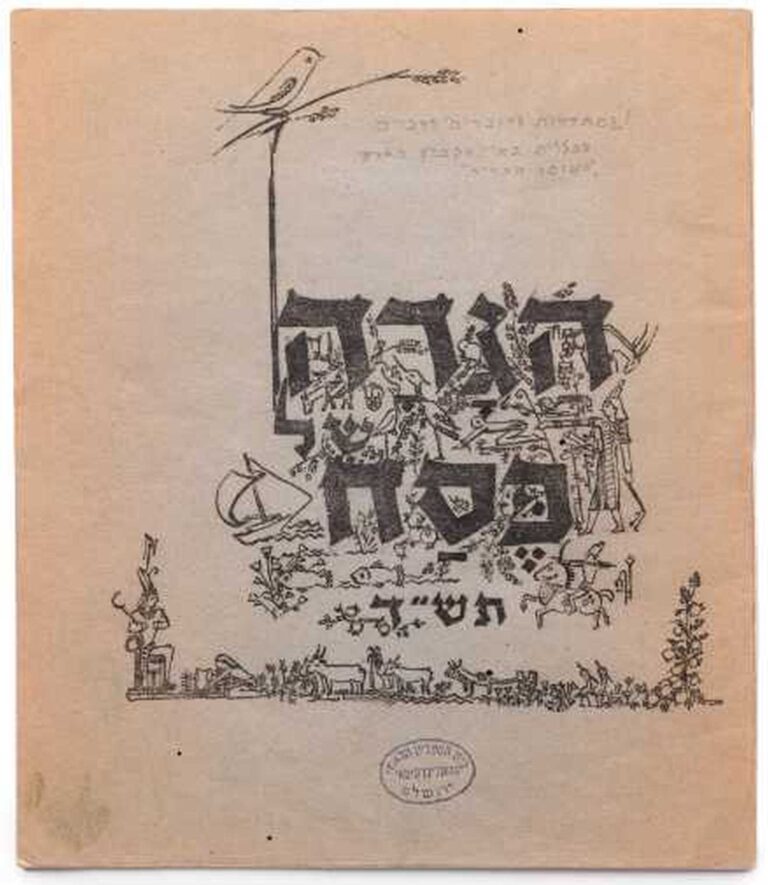
5. The Birds’ Head Haggadah
It may seem odd and eerie to see human figures depicted with birds’ heads, but this was a common drawing practice in the 13th and 14th centuries.
Like many Ashkenazi manuscripts of that time, this Haggadah features an illustrated version of the redemption story starring individuals with distinct bird’s heads. The images include ritualistic and textual motifs such as scenes from the Bible and a vision of Jerusalem rebuilt.
Viewing this piece is a one-of-a-kind experience visitors can have in the Israel Museum’s permanent collection of illuminated manuscripts.
6. Benghazi Haggadah
The Benghazi Haggadah was put together by soldier volunteers who helped free the Benghazi Jewish community from the Nazis in 1943. This was a Passover Seder that not only meant historical freedom, but commemorated an actual liberating event.
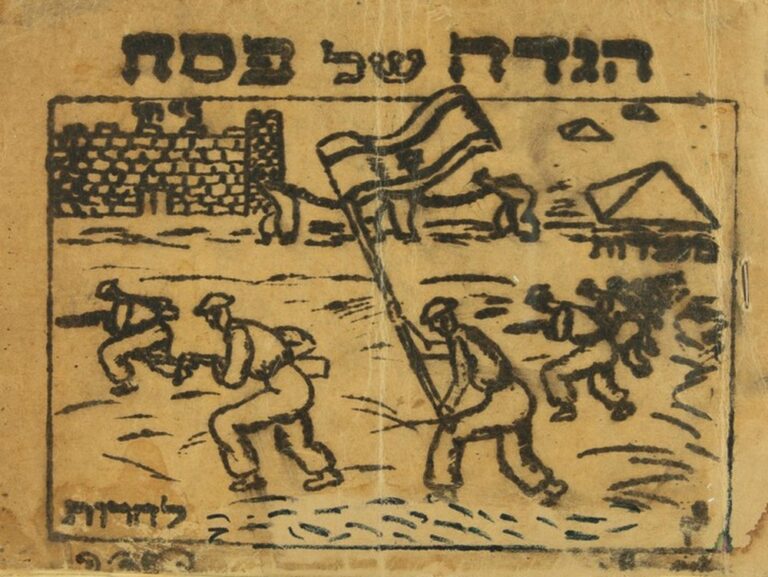
There are a few poignant aspects of this seemingly humble Haggadah that take us back to this experience: for example, the hopeful forward by the soldiers who created it and the illustration including military equipment and planes.
One particularly powerful quality to spotlight is its format. There were logistical issues when organizing the Seder in 1943, preventing the soldiers from making enough copies of the Haggadah. Confiscating telegrams and letterheads from local government offices, the organizers printed the Haggadahs on a typewriter and made cheap copies with a mimeograph machine.
A copy of the Benghazi Haggadah can be viewed at the National Library.
7. Flowers of Israel Haggadah
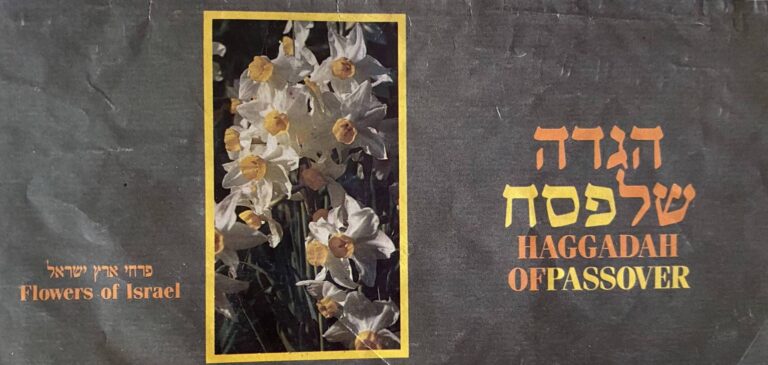
This sweet and simple Haggadah by Israeli photographer Uzi Paz consists of a compilation of images that accompany each page of traditional text.
Without complicated commentary, the land of Israel itself acts as a symbol of freedom within the story of the Exodus.
A concise format and design allow viewers to enjoy the Haggadah while taking them on a journey through Israel’s botanical landscape in the 1980s. Especially intriguing for nature lovers, the photos remind us to aim for peace while strengthening and building a resilient land.
This tranquil Haggadah is on view as part of the Israel National Library’s permanent collection.
8. The Passover Haggadah illustrated by the General Israel Orphan’s Home in Jerusalem
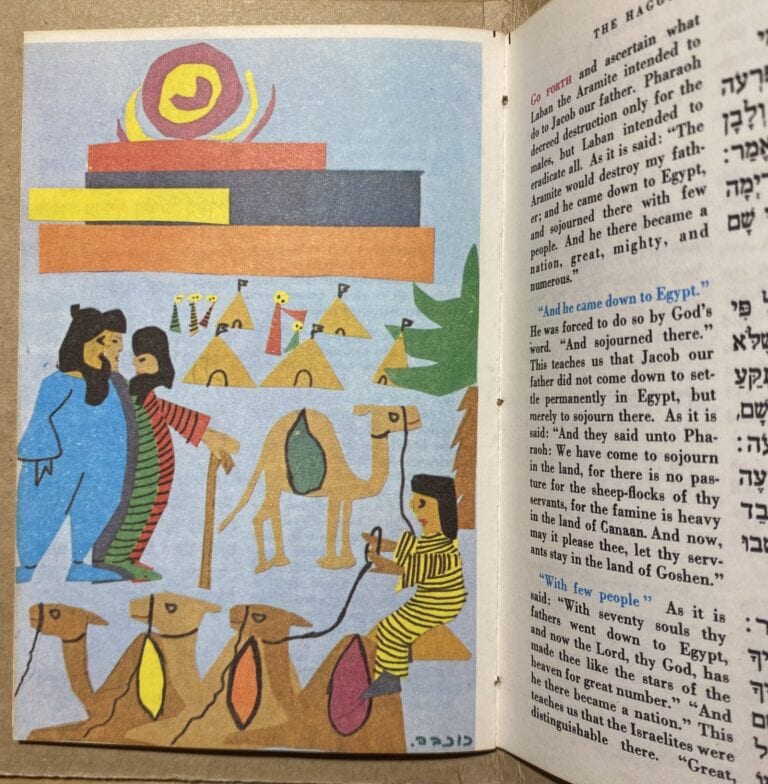
There’s something very poignant about orphans celebrating Passover in Jerusalem. On the one hand, they’ve made it to the Jewish people’s mythical homeland. But the Seder is a celebration of family and passed-down traditions — and while these children likely faced enough hardships to relate to the idea of bondage, do they have the framework and support to experience freedom?
I like to think the creation of this Passover Haggadah, made by the children of the General Israel Orphans Home for Girls in 1980, did give the young artists some semblance of freedom. Although it’s simply crafted, the sweet illustrations published are an optimistic reminder that human resilience is a key ingredient in the story of redemption.
9. The Asufa Haggadah
Israeli design studio Asufa releases a new version of its contemporary Haggadah each year. In line with the studio’s mission, the Haggadah represents elements of Israeli design that are prevalent today, creating a style that “starts right here, in our home.”
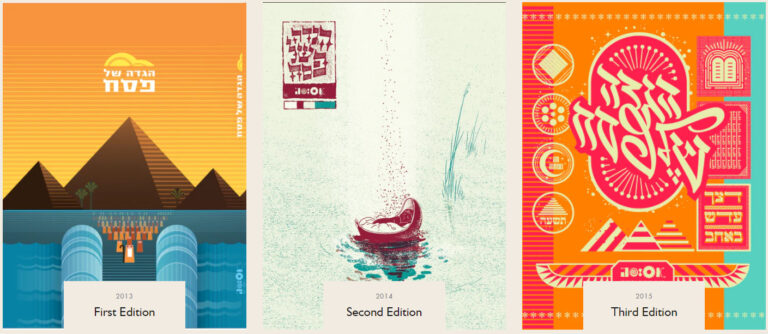
Each edition includes illustrations by 44 Israeli artists and designers — running the gamut from emerging artists to veterans. They are invited to interpret the text through the lens of today’s reality in Israel.
Viewers will appreciate this refreshing take on the Haggadah, which is currently in acquisition and will be available at the Israel National Library’s permanent collection.
10. The Venice Haggadah
The Venice Haggadah was printed by the Bragadini Press in 1629 in Venice, Italy.
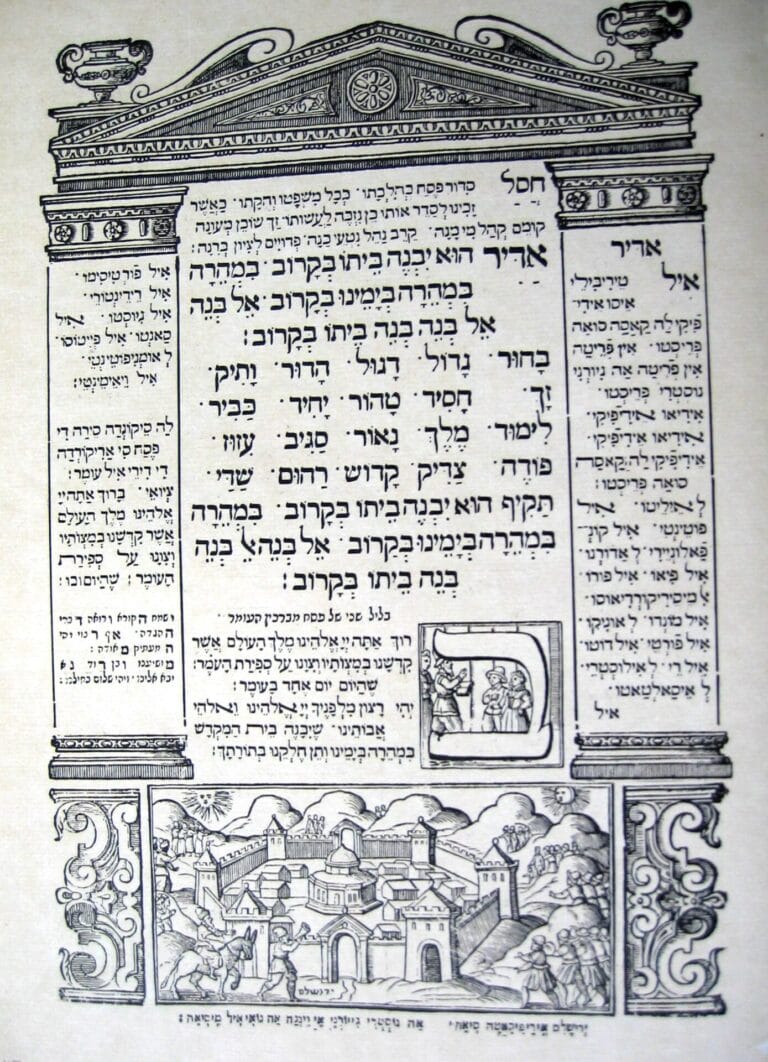
The decoration includes a series of small panels on an introductory page illustrating the various stages in the Seder and the Passover celebration, with a page similarly grouped in panels of the 10 plagues. After its introduction, these elements were to become a common feature in illustrated Haggadahs.
The Venice Haggadah continued to be reproduced, without any basic changes but with increasingly worn types and indistinct blocks, until late in the 18th century.
Although the original part of the collection is awaiting an opportunity to be exhibited at the Museum of Italian Jewish Art in Jerusalem, eight contemporary artists were invited to design the New Venice Haggadah in 2021.
The contemporary version includes 24 etchings illustrating the Haggadah with a unique visual commentary that’s informed by the spirit of the original, yet consummately fresh, contemporary and innovative. This book, alongside the individual prints, can be purchased online.
11. The Haggadah by Zeev Engelmeyer
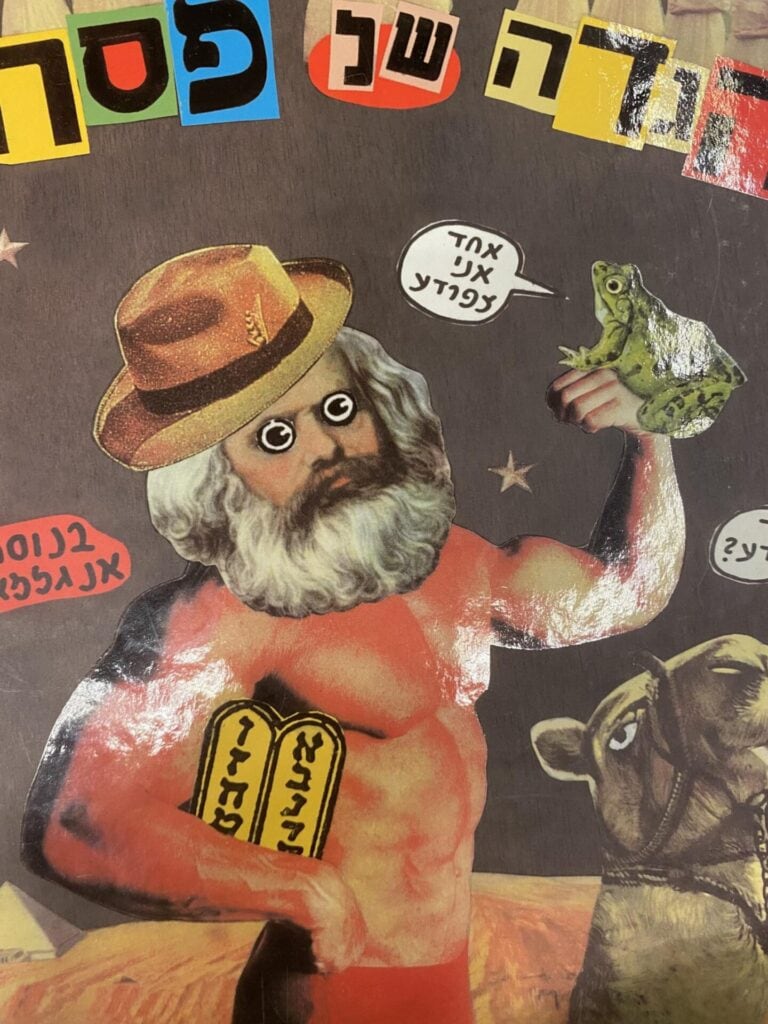
It’s cheeky, it’s rude, it’s funny and entirely inappropriate. This is a Haggadah every “rebel son” will enjoy.
Zeev Engelmayer is one of Israel’s most popular comics artists and illustrators, living and working in Tel Aviv. Using retro-style images of American scenery and culture as a visual starting point, Engelmeyer’s Haggadah is a modern version of slavery and redemption.
Through collage, illustration and a comic approach, the artist hones in on an Israeli-driven narrative that criticizes politics, makes fun of consumerism and mocks religion.
While it’s full of laughs, The Haggadah, which was printed in the 1990s, continues to provide a rich commentary and warning against becoming enslaved to the Egypt of today. Engelmeyer’s Haggadah can be seen at the Israel National Library in Jerusalem, or purchased online.




